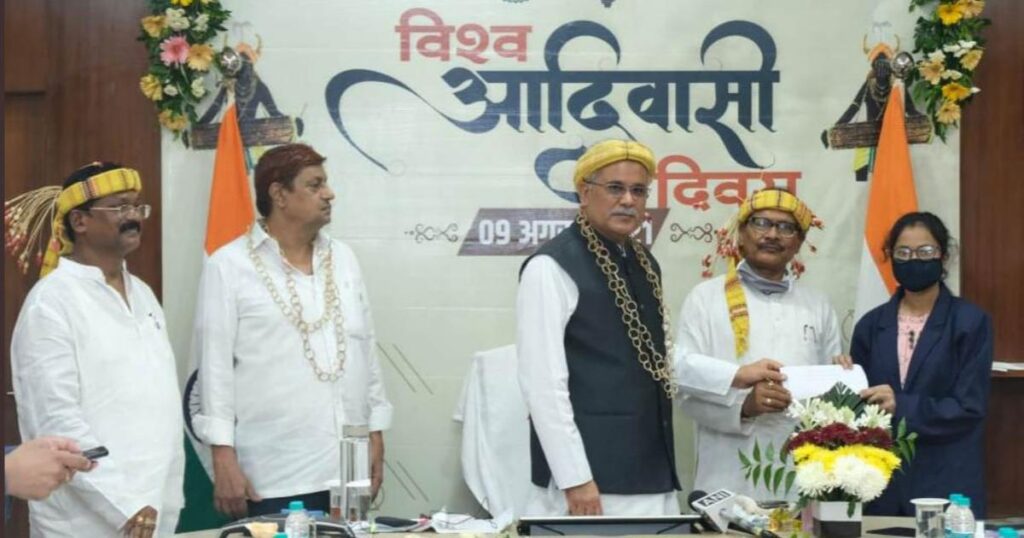
On Monday, the Chhattisgarh government unveiled the state’s first tribal atlas, which includes detailed statistics on important demographic factors like population, literacy, and sex ratio, as well as Adivasi culture.
“After Odisha and Jharkhand, Chhattisgarh is the third state to prepare such an atlas for its tribal population,” a press release issued by the directorate of public relations stated.
In a program to mark the International Day of the World’s Indigenous People, chief minister Bhupesh Baghel released the atlas that has been prepared by the Tribal Research and Training Institute (TRTI) in both Hindi and English virtually from his official residence.
According to officials, that atlas provides all information on key demographic indicators like tribe-wise population, literacy, sex ratio, child population, work participation rate, health facilities, and education.
The atlas also has details on tribal culture such as tribal dances, festivals, religious beliefs, art craft, language, dialects, and tourism of different tribes residing in the state.
Physical distribution of these tribes and district-wise habitat profiling in the atlas gives a clear picture about their different ecological settings, commissioner of state’s Scheduled Tribe and Scheduled Caste development department Shammi Abidi said.
A short description about the 42 tribes residing in the state, along with their authentic history, makes the atlas varied and rich, she added.
The atlas data has been prepared on the basis of information gleaned from Census 2011, surveys of Particularly Vulnerable Tribal Groups (PVTGs) done by TRTI and state’s Scheduled Tribe (ST) and Scheduled Caste (SC) development department’s information.
Tribals comprise 32% of Chhattisgarh’s population, according to official data.




